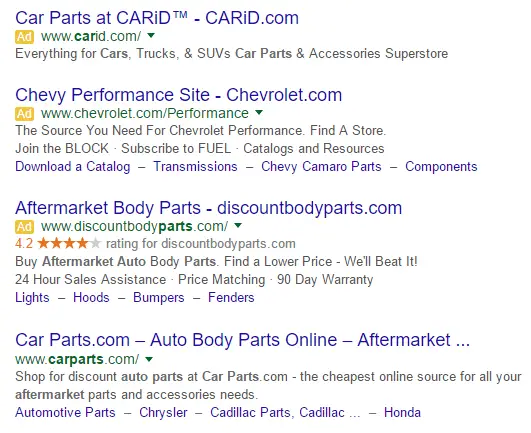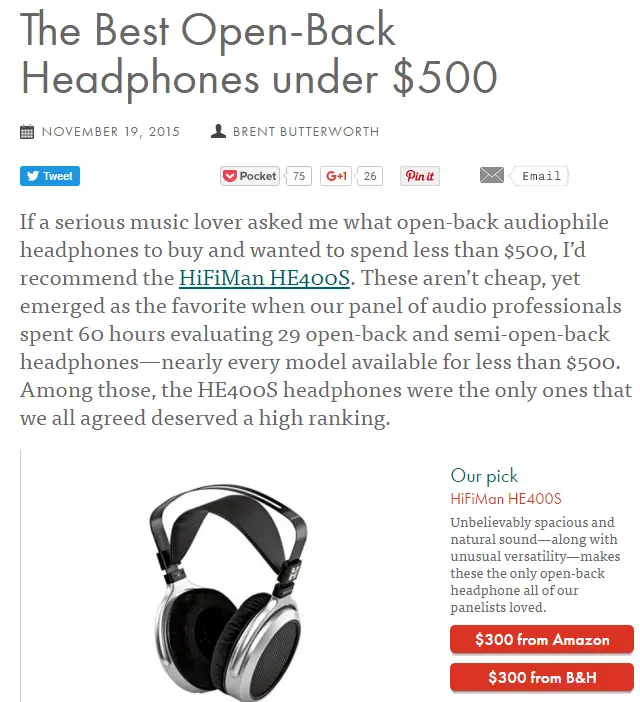Native Advertising - A Solution to Ad Blocking?
Although relatively new, native advertising is an area that is gaining interest within the web publishing industry. In particular it is increasing in popularity because it tends to result in a greater level of responsiveness from website visitors than traditional online advertising and, if implemented correctly, can be immune to ad blocking. These strengths make native advertising a worthwhile option to consider as part of a strategy to address ad blocking.
What is Native Advertising?
Native advertising, as will be covered later in the chapter, can take a variety of different forms. The official definition of native advertising, as stated in Wikipedia, reads as follows: “Native advertising is a type of advertising, usually online but feasibly elsewhere, that matches the form and function of the platform upon which it appears.”
It helps to break this definition down into its constituent parts when explaining what it means. By advertising we are, of course, referring to paid content, the purpose of which is to promote an organization, product or service. The term platform refers to the medium through which the advertisement is presented to the potential customer. For the purposes of this book this is assumed to be a website, but applies equally to apps and print publications. When the definition declares that native ads match the form and function of the platform, this means that the advertisement not only matches the visual design of the website, but also looks, feels and behaves like the site’s own content.
As opposed to the traditional ad units that appear in the form of a banner at the top of the page or a skyscraper in a side bar, native advertising is typically integrated into the main content of the website. A native ad can range from sponsored links in search results through to an entire web page article or news item designed to engage the reader with relevant content while also promoting the interests of the advertiser.
Native ads are believed to be more effective at gaining visitor attention and engagement. Because native ads make up part of the main content of a web page, they are often harder to remove using ad blocking technology.
Despite the need to blend seamlessly with the content of the page, native content should not be deceptive. Native advertisements should always be disclosed using wording such as “Sponsored”, “Promoted”, “Sponsored Content”, “Suggested Links”, “You might also like” etc.
Types of Native Ad Content
The Interactive Advertising Bureau (IAB) produced the Native Advertising Playbook in 2013 to outline a number of different categories of native ad.
In-Feed Ads
An in-feed ad is typically presented in story form and appears within the main body of the web page. It is designed to match the surrounding content and can link either to another page within the website, or to an external page. The example shown in Figure 16-1, represents a typical in-feed native ad for gardening equipment embedded within the list of news items on the Yahoo News web page:
Figure 16-1
Such content is usually disclosed as being advertising by the inclusion of text that reads “Promoted”, “Sponsored” or “Sponsored Content”.
Search Ads
The sponsored entries that appear at the top of a Google search results page are a prime example of native search ads. Aside from the declaration that these are ads, the form and function of the entries match that of the organic search results. Figure 16 2, for example, shows a combination of native search ads and an organic search result:
Figure 16-2
Recommendation Widgets
Recommendation widgets typically provide a list of recommended content found on other websites pages with a declaration which often reads “You might also like”, “Recommended for you” or “From around the web”. Figure 16 3 shows two items listed within a recommendation widget. This type of native advertising can be used by advertisers to drive traffic to a web site or to promote a product or service:
Figure 16-3
Promoted Listings
Generally used on websites designed to sell products and services (as opposed to being primarily content based), promoted listings are advertisements for products or services that link to a third party page where the visitor can make a purchase. In this scenario, the web publisher might write a review of a product and include a promoted listing for the product. This listing will include a link or button allowing the user to click through and buy the product, with the publisher typically earning a commission on the sale:
In-Ad
An in-ad native advertisement is designed to fit within a traditional ad sized container (such as a banner or skyscraper) and, like a traditional ad, is placed outside of the natural content of the page. The content of the ad must be contextually relevant to the rest of the content of the page.
Implementing Native Advertising
There are a number of approaches that can be taken when implementing native advertising on your website. If you already have a direct relationship with companies that run traditional advertising on your site, approach those partners and suggest that they produce in-feed native ad content suitable for placement on your site. If you do not yet sell your ad space inventory direct to advertisers, give serious thought to doing so. Begin by creating a media kit and running ads on your own site seeking potential direct advertisers. Also consider using social media and running ads on Google using appropriate keywords to attract the attention of advertisers.
Also, consider generating your own content that can be used to provide context for a promoted product listing. Write impartial product reviews, for example, and include options to purchase those items using programs such as Amazon Associates or Best Buy Affiliates.
Alternatively, the option is available to partner with one of the many native advertising companies such as Taboola, Outbrain and ShareThrough, though keep in mind that some of the native advertising provided by these companies will be targeted by ad blockers in the same way as traditional ads. That being said, both Taboola and Outbrain have paid to join the acceptable ads program so you may have success getting some of those ads whitelisted on your site for visitors using AdBlock Plus. Be sure to carefully vet any potential native ad providers before investing time and effort into this approach. In particular, seek assurances that native ad content provided will be relevant to your website. Some native ad providers, particularly those providing recommendation widgets, have a tendency to display low quality so called “click-bait” recommendations that may not be the best fit for your website.
Summary
Native advertising is generally identified as achieving greater levels of response and engagement that traditional forms of online advertising. Defined as advertising that matches the form and function of the platform upon which it appears, native advertising is more closely integrated into the content of a web page (to the extent that it often serves as the primary content of a web page). Native advertising takes a number of forms including in-feed ads, search ads, recommendation widgets and promoted listings. Native advertising may be sourced directly from advertisers or obtained via number of native advertising companies. When using a third party to source native advertising it is important to review the content for quality and relevance.






